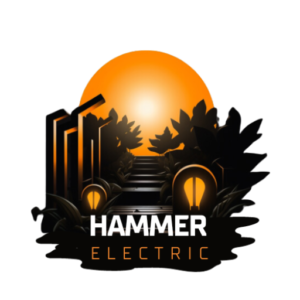History and Development of Induction Lamps
– In 1882, Philip Diehl patented the induction incandescent lamp.
– Nikola Tesla demonstrated wireless power transfer to electrodeless lamps in the 1890s.
– John Anderson of General Electric applied for patents for electrodeless lamps in 1967 and 1968.
– Philips introduced induction lighting systems in Europe in 1990 and in the US in 1992.
– General Electric produced the induction lamp Genura with an integrated high-frequency driver in 1994.
Plasma Lamps
– Plasma lamps generate light by exciting a plasma inside a closed transparent burner using radio frequency power.
– They use noble gases or a mixture of gases and additional materials such as metal halides, sodium, mercury, or sulfur.
– A waveguide is used to focus the electrical field into the plasma.
– Gas is ionized, and free electrons collide with gas and metal atoms, resulting in visible light or ultraviolet radiation.
– Plasma lamps are produced by Ceravision, Luxim, and in development by Topanga Technologies.
Magnetic Induction Lamps
– Magnetic induction lamps are similar to conventional fluorescent lamps.
– Mercury vapor in the discharge vessel is electrically excited to produce ultraviolet light.
– The ultraviolet light excites internal phosphors to produce visible light.
– Magnetic induction lamps have been available since 1990 but are relatively unknown to the public.
Advancements in Induction Lamps
– In 2005, Amko Solara introduced induction lamps that can dim and use IP-based controls.
– In 2006, Luxim introduced the LIFI projector lamp product.
– In 2009, Ceravision introduced the first high-efficiency plasma lamp called Alvara.
– In 2012, Topanga Technologies introduced advanced plasma lamps driven by solid-state RF drivers.
– Induction lamps became a viable energy-saving solution for lighting retrofit and upgrades before LED lighting.
Applications and Advantages of Induction Lamps
– Induction lamps are used in roadway and high mast lighting applications, replacing metal halide and high-pressure sodium systems.
– Induction lamps offer higher lumen density and approximately 50% power reduction compared to HID counterparts.
– They can reach full intensity in around 45-60 seconds from a cold or hot strike.
– Most induction lighting systems are rated for 100,000 hours of use before requiring component replacements.
– Advantages of induction lamps include long lifespan, high energy conversion efficiency, lower operations and maintenance costs, suitability for commercial and industrial applications, and availability in different lamp models and qualities.
Disadvantages of induction lamps include potential radio frequency interference, mercury content, the need for high-quality electronic circuits for longer service life, higher initial cost compared to conventional lamps, and limited range of applications due to specific form factors.
See also:
– List of light sources
– Induction cooker
References:
– U.S. Patent 255,497, Incandescent Electric Lamp, March 28, 1882
– Experiments with Alternate Currents of Very High Frequency and Their Application to Methods of Artificial Illumination, AIEE, Columbia College, N.Y., May 20, 1891
– Electrodeless gaseous electric discharge devices utilizing ferrite cores
– High-frequency electrodeless fluorescent lamp assembly
– A History of Heraeus Noblelight Fusion UV and its Industry Leadership in UV Curing Equipment and Products Source: https://en.wikipedia.org/wiki/Electrodeless_lamp#Magnetic_induction_lamps
The induction lamp, electrodeless lamp, or electrodeless induction lamp is a gas-discharge lamp in which an electric or magnetic field transfers the power required to generate light from outside the lamp envelope to the gas inside. This is in contrast to a typical gas discharge lamp that uses internal electrodes connected to the power supply by conductors that pass through the lamp envelope. Eliminating the internal electrodes provides two advantages:
- Extended lamp life (internal electrodes are the most limiting factor in lamp life, since their metal content will get sputtered onto the lamp ends every time they are turned on)[citation needed]
- Ability to use higher-efficiency light-generating substances that would react with internal metal electrodes in conventional fluorescent lamps[citation needed]

Two systems are common: plasma lamps, in which microwaves or radio waves, energizes a bulb filled with sulfur vapor or metal halides, and fluorescent induction lamps, which are like a conventional fluorescent lamp bulb that induces current with an external or an internal coil of wire via electromagnetic induction.
